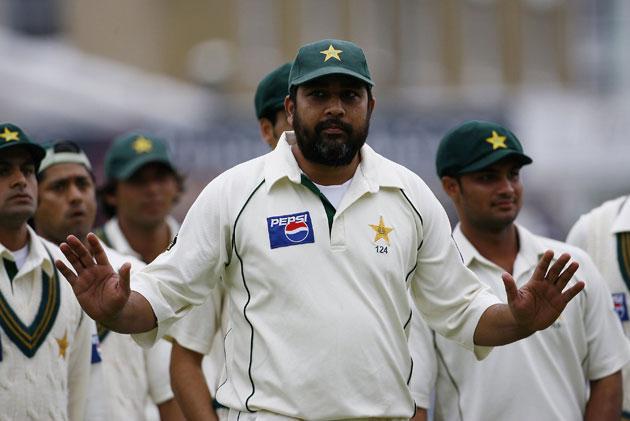Cricket, the so-called “gentleman’s game,” is built on a foundation of fair play, sportsmanship, and integrity. Yet, throughout its long history, there have been moments that have tested this very notion. These aren’t just moments of bad luck or poor judgment; they are unforgettable cricket moments that have sparked outrage, redefined rules, and left a stain on the sport’s reputation. They are the famous cricket scandals that still ignite fiery debates decades later.
This listicle dissects and ranks the top 10 most controversial calls and decisions that have shocked the cricketing world. Our ranking is based on a combination of their profound impact on a match’s outcome, the sheer global outrage they caused, and their long-lasting legacy on the game. These are the cricket controversies that transcended the boundary ropes and became headlines worldwide.
1. The Underarm Incident: When Winning Became Everything

In the final over of a One-Day International between Australia and New Zealand in 1981, New Zealand needed a six to tie the match. In a moment of sheer desperation and moral bankruptcy, Australian captain Greg Chappell instructed his brother and bowler, Trevor Chappell, to bowl the final delivery underarm, along the ground.
The action, while technically within the rules at the time, was a blatant violation of the spirit of the game. It denied the batsman, Brian McKechnie, any chance of hitting a six and secured an ugly win for Australia. The incident led to immediate and widespread condemnation from both sides of the Tasman, with New Zealand’s Prime Minister calling it an “act of true cowardice.” The rules were quickly changed to ban the practice, a permanent scar on cricket’s history.
2. Sandpapergate: The Systematic Cheating that Rocked Australia

In 2018, during the third Test between Australia and South Africa, a meticulously planned cheating scandal erupted. Australian batsman Cameron Bancroft was caught on camera using sandpaper to illegally scuff the ball, with the full knowledge of his captain, Steve Smith, and vice-captain, David Warner. The incident, now famously known as Sandpapergate, sent shockwaves far beyond the cricketing world.
The premeditated nature of the offense and the subsequent cover-up plunged Australian cricket into a crisis of integrity. Smith, Warner, and Bancroft were handed lengthy bans, and a cultural review was initiated, forcing the team to confront its “win at all costs” mentality.
3. The Bodyline Series: A Diplomatic Crisis on the Pitch

The 1932-33 Ashes series between England and Australia was a cricketing war, not just a game. To combat the unparalleled genius of Don Bradman, England’s captain Douglas Jardine devised a tactic called “fast leg theory,” or Bodyline series. Bowlers, led by the fearsome Harold Larwood, aimed the ball directly at the batsmen’s bodies, with a packed leg-side field ready to catch deflections.
This deliberately intimidating and physically dangerous approach led to a number of injuries, and an official complaint from the Australian Cricket Board described the tactics as “unsportsmanlike.” The controversy escalated to a diplomatic level, straining relations between the two nations and forcing a change to the laws of cricket to limit the number of leg-side fielders.
4. The 2006 Pakistan Forfeit: An Umpire’s Bold Call

In a Test match at The Oval in 2006, umpires Darrell Hair and Billy Doctrove made a stunning accusation against Pakistan, penalizing them five runs for ball tampering. The Pakistani team, led by captain Inzamam-ul-Haq, protested the decision and refused to take the field after the tea break. After a long wait, the umpires removed the bails and awarded the match to England by forfeiture, the first time in 129 years of Test cricket.
The Pakistan Oval Test controversy created a deep schism, leading to the temporary banning of umpire Hair and a debate about the balance of power between players and officials. It was a shocking end to a Test match that highlighted the fragility of trust in the game.
5. The Monkeygate Scandal: A Racial Row That Almost Halted a Series

The 2008 Sydney Test between Australia and India was marred by a series of contentious umpiring decisions and, most notably, a racial abuse allegation. Australian all-rounder Andrew Symonds accused Indian spinner Harbhajan Singh of calling him a “monkey” on the field. The incident, known as Monkeygate, led to a furious protest from the Indian team, who threatened to abandon the tour.
The ensuing ICC hearing saw Harbhajan handed a three-match ban, which was later overturned on appeal. The scandal exposed deep-seated issues of racial tension and poor sportsmanship, with a string of baffling decisions by umpire Steve Bucknor only fueling the fire. It left a bitter taste and severely strained the relationship between the two cricketing powerhouses.
6. The 2019 World Cup Final: Overthrow Chaos

The 2019 World Cup Final between England and New Zealand was arguably the most dramatic match in cricket history, decided by the narrowest of margins—a “boundary count” rule after a tied Super Over. However, the final moments of the regulation match were clouded in controversy. With England needing nine runs off three balls, a throw from the deep deflected off Ben Stokes’ bat and ran to the boundary.
The umpires awarded six runs (two completed runs plus four for the overthrow), a decision that was later revealed to be an error based on the rule that the batsmen must have crossed for the second run before the throw was made. The outcome fundamentally changed the equation and, for many, unfairly tilted the match in England’s favor, sparking a global debate about the rule and the spirit of the game.
7. Asia Cup Final 2025: Trophy Ceremony Snub

The Asia Cup Final 2025 between arch-rivals India and Pakistan was a thrilling, high-stakes contest, culminating in India’s dramatic victory to claim a record-extending ninth title. However, the celebrations were immediately overshadowed by an unprecedented political standoff during the post-match presentation ceremony. The Indian team refused to accept the winners’ trophy and medals from Asian Cricket Council (ACC) President Mohsin Naqvi, who also serves as the Chairman of the PCB and Pakistan’s Interior Minister, citing political tensions and his prior controversial remarks.
This refusal led to a bizarre delay, culminating in Naqvi allegedly walking off with the silverware, resulting in the champions celebrating their win without the physical trophy. The unprecedented drama prompted a formal protest from the BCCI and sparked a global debate about the interference of national politics and the “spirit of the game” in multi-nation cricket tournaments.
8. Angelo Mathews’ ‘Timed Out’ Dismissal: The First of Its Kind
In a 2023 World Cup match between Sri Lanka and Bangladesh, Angelo Mathews became the first player in the history of international cricket to be given “timed out.” After a wicket fell, Mathews’ helmet strap broke as he arrived at the crease, and he signaled for a replacement. Bangladesh captain Shakib Al Hasan, recognizing the delay, appealed to the umpires, who upheld the decision.
Mathews was dismissed without facing a single ball. The decision, while technically within the rules, was widely criticized as a gross violation of sportsmanship and triggered a heated war of words between the two teams. It was a cold, clinical application of the law that for many, was simply a “bad look” for the sport.
Also Read: The Ten Weirdest Dismissals in Cricket History
9. The Allan Donald Run-Out: The Choker Tag Sticks

The 1999 World Cup semi-final between South Africa and Australia is remembered for its agonizing finish. With South Africa needing one run off three balls with one wicket remaining, Lance Klusener hit the ball and set off for a single. His batting partner, Allan Donald, initially refused to run. After a frantic mix-up, Donald was run out, handing Australia a victory and crushing South Africa’s World Cup dreams.
While not an umpiring decision, this moment is a pivotal unforgettable cricket moment because it solidified South Africa’s infamous “choker” tag on the biggest stage. The Allan Donald run-out is a testament to how high-stakes pressure can lead to some of the most dramatic and controversial moments in the game.
10. The 2008 Sydney Test: A Series of Umpiring Errors

Beyond the Monkeygate scandal, the 2008 Sydney Test was a masterclass in poor officiating. The home-side Australia was the beneficiary of several critical errors, with umpire Steve Bucknor making a string of incorrect decisions, particularly against the Indian batsmen. These included a wrong stumping call against Sourav Ganguly and a caught-behind that was not given against Andrew Symonds, who went on to score a crucial century.
The consistent bias in decisions led to immense anger from the Indian team and its fans, and eventually led to the removal of Bucknor from the remainder of the series, underlining the severe repercussions of poor judgment.
Conclusion
Cricket, like all great sports, thrives on its unpredictability and human element. But as this list shows, the same drama that makes the game so compelling can also push it into its darkest corners. From deliberate acts of gamesmanship to umpiring blunders and political interference, these controversies remind us that cricket is never just about bat and ball. It’s about people, choices, and consequences.
They are a part of cricket’s messy, compelling narrative. But in an era where every decision is scrutinized, which of these moments most tarnished the “spirit of cricket” for you, and why?





